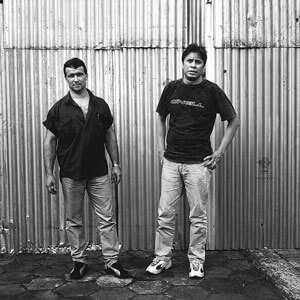Responding to globalization, Argentines occupy their once idle factories
For years, the image of Argentina and its cosmopolitan capital, Buenos Aires, was one of glamour and plenty. Argentina, the second-largest nation in South America and a former economic powerhouse, found itself in the past five years in a financial quagmire that all but destroyed the nation. During one bank closure, middle-class citizens revolted and vandalized bank lobbies and ATMs. The country had several presidents in several weeks.
What happened? And how does a once-proud nation rebound?
The new direct-action documentary, “The Take,” looks at two phenomena happening in today’s Argentina. First, former factory workers have taken over the plants abandoned by the private owners, and created jobs for themselves under democratically determined regulations. Second, the elected officials who helped destroy the economy made a comeback in last year’s elections.
“The Take” brings its cameras right into the factories being occupied and revitalized by their former workers. About 15,000 workers currently occupy these formerly private companies, and this is a large part of the economic recovery. The problem is that now that the factories are turning a profit, the owners want them back. After all, they argue, they built them up and made the initial investments. When International Monetary Fund agreements forced companies to close their factories and move to other, cheaper companies, the owners followed globalization’s orders. The factories sat idle, and so did humiliated workers. For many Argentine men, the inability to work and provide for their families has become a great source of anguish.
The filmmakers spent seven months interviewing workers, mostly, as well as a former factory owner who was sure the government would restore his economic stake. The workers’ occupation of the factories is around-the-clock, and they are often armed with slingshots to keep the police away, while waiting for judges to make decisions that could make or break the occupations. Avi Lewis and Naomi Klein spent a lot of time with the workers, who are plainspoken and very sympathetic. They talk about the lives they used to have—with nights out on the town and credit cards—and the back-to-basics lives they now lead. But their pride in surmounting their economic humiliation and returning to work, this on their own terms, is evident throughout the film.
The Forja labor movement through which a successful factory takeover has been achieved depends on democratically determined rules. One workers notes that by “voting a lot, you get used to losing a lot and to winning a lot.” In the ceramics factory on which “The Take” focuses, everyone gets paid the same, and one woman points out that the budgeting is simple. “You add and subtract. What’s so difficult about that? Under the bosses, they made it seem very difficult.”
“The Take” also shows us that during a police lock out at the Brukman textile factory, workers, mostly female seamstresses, achieved their first victory. In one of the film’s most dramatic moments, we see that the police forces are clearly outnumbered by the Forja, but are better-armed and not afraid to use tear gas and shoot rubber bullets into the crowd. It is during this sequence that a woman shares how her sister, sick with cancer, is alive because her fellow occupiers saved their pesos to help her get treatment. She also mentions how the previous owners would have docked her a day’s pay for taking off time for a hospital visit.
As hopeful as the scenes of reinvigorated factories and proud workers are, “The Take” also shows the downside of Argentina—a political culture that welcomed back several disgraced parties that helped destroy the country’s economy with billions of dollars of debt. Even though the patience of Argentine voters snapped only two years ago, former Pres. Carlos Menem and his rival, Nestor Kirchner, a Peronista, still had the machinery to buy votes. For the price of a sandwich and a Coke, the parties can sway people who are starving.
As “The Take” closes, Menem leaves the race when a runoff is declared, and Kirchner is swept into office. The oligarchs switch places. Kirchner soon upholds new IMF agreements aimed at restoring the old economic regime of Menem. But, factories remain occupied, often supported by the courts.
“The Take” sheds light on an alternative to the economic wasteland created by globalization still alive even as the politics of the nation return to business as usual. “The Take” is a must-see, if only as a warning that what happened to a vital country like Argentina could happen elsewhere.



































